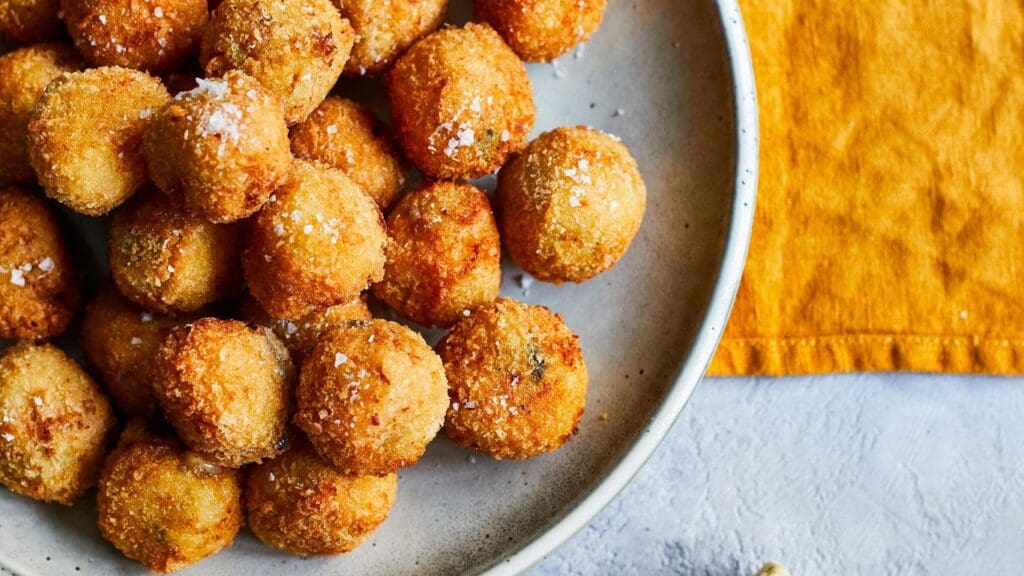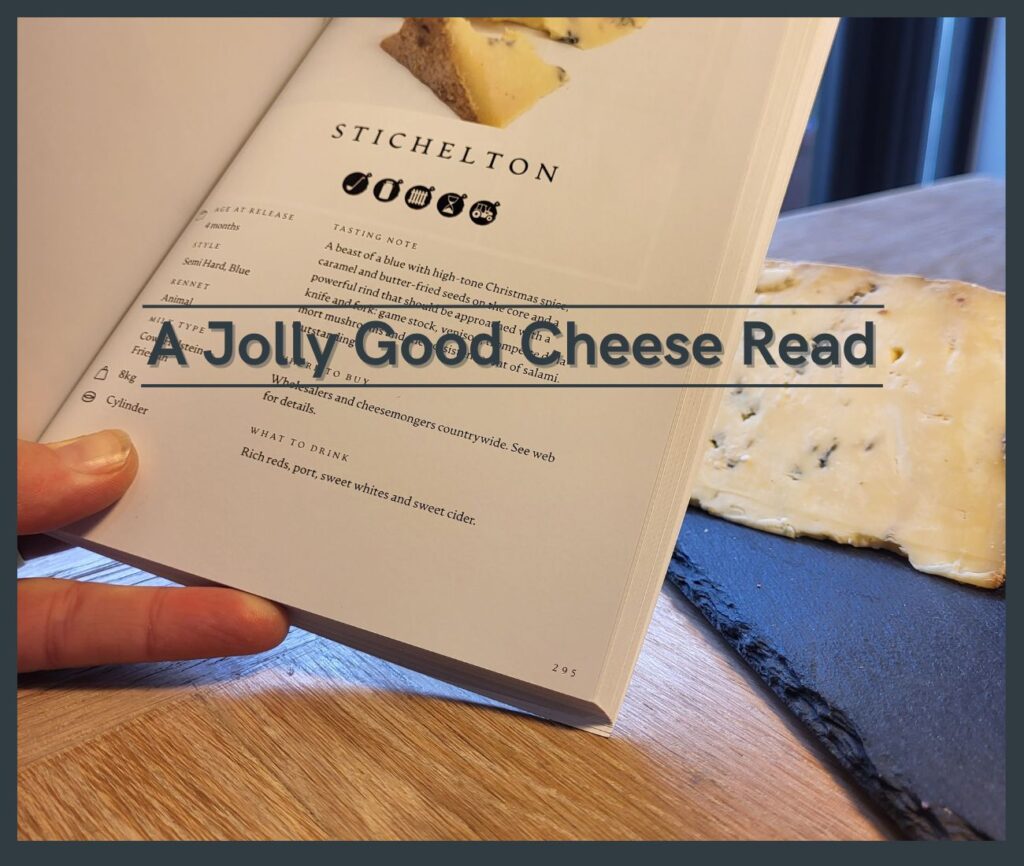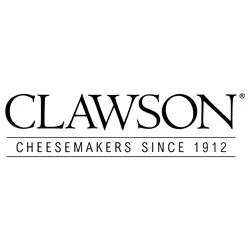#TNCN 13 with Charlie Turnbull. Charlie Turnbull meets Rupert Linton of Brindisa to talk Spanish Cheese. This week we will look at raw Sheep and Goat’s milk cheeses of Central Spain. We willl be tasting Torta de Barros, Cured Artisan manchego and Moluengo, lactic goats cheese from La Mancha.
BROADCAST ON 30th June 2020 – 8.00PM
GUIDE TO TASTING CHEESE
Learn about the four stages of tasting cheese and how to take tasting notes with this definitive guide to tasting cheese.
Cheeses of Central Spain Episode Video Transcript
It’s Tuesday it’s cheese night. Hello everybody, tonight it is cheese night and it’s time to talk the cheese’s of Spain. It’s lovely seeing everyone I understand that the world is beginning to open up but trust me cheese night is gonna continue. Right let’s talk about Tracy, come on grandmother Tracy come on how you doing, Matilda is beautiful so she’s a week old today absolutely delicious sleeps all the time just getting used to being in this world it’s like what the hell’s this where am I because we know babies are the original cheese makers okay that’s where the rennet thing happens so right now your little baby Matilda is making cheese in her tummy with her rennet and her mummys milk the best cheese makers of all.
Yeah no she’s superb thank you very much and thank you to everybody for their messages well one is been very excited to hear about her yeah well done I just say to Alison as well Alison Park is one of our your Tuesday night is cheese night followers and she’s been on every program Charlie and she passed us to find out because we are all racing to become masters of cheese I obviously think I’m going to be the first and best but there is unfortunately stiff competition so the Massachusetts they’ve got an eighth you guys need to know where to Train obviously the Academy cheese I’ve got a course starting tomorrow if you’re interested on the first and otherwise is one I’m doing on 29th but we also have patch room agree going to do some really good cheese webinars we Hanako but you can do just e-learning if you want to do the e-learning so lots of good places to study out there I’m complicated choose the best place the best place to just say as well we’re trucking on with level three and master of cheese so we’re working away in the background it’s gonna take some time because times are different at the moment and not what we expected really quite hard yeah in terms of patronage you know many of our patrons are the bigger wholesalers whose markets have disappeared so fun things going to be tight for the next sort of 12 18 24 months so we’re going slow but it’s all progressing level three master Ching I’m pencil then to do the the module on tasting which is about sensory analysis I am absolutely looking forward to that that’s going to be my thesis which is part of my my journey to be a master of cheese so you know it’s all going down now one of the things they’re going to be able to learn at level 3 though is there’s going to be a module on Spanish cheese’s which is very exciting yeah which is a fix segue to let’s get group in Rupert it’s a pleasure welcome [Music] so well yes welcome Rupert Rupert is one of our is from brandy sir and they are a patron of the Academy and pleased and have supported us with funding and knowledge and seminars all about Spanish cheese we absolutely adore Rupert and Monaco adore indeed sir when I have my delicatessen many many years ago brendi so are one of my favorite is suppliers of Spanish torito’s and olives and cheeses and tonight you’ve got some amazing ones to taste I’m gonna duck out and leave you guys to it so enjoy and thank you Rupert for agreeing to come home with Charlie millions goodbye Tracy I all right Rupert let’s get into this that’s going to the case let’s get some background brandy sir just in case there’s people who don’t know what you and how you do it you’ve got restaurants in London but most importantly you’re a Spanish importer yeah the core of our business is importing artists and food from spades and then part of what we impose is a range of Spanish artisan cheeses as well but we also do either like Spanish hams Iberico hands olive oils monies pine nuts when my favorites your kitchen must be a heaven thank you very well recently yes yeah so yeah I mean I’ve been to your your maturing rooms you’ve got the boat maturing rooms down in in South London with wonderful and they just look so Spanish those the tile type brick Onderon to create the right space huge breeze yeah yeah because we decided to you know quite a few years ago now we decided we wanted to make sure that well our cheese has had natural rinds or as many as possible of our choices had natural rinds in order to do that we needed to have to improve the conditions in which we could keep on cheeses to to help their wines to grow and to survive we why do mean apart from menchaca which we’re going to get on to in a minute why do you think the British awareness of Spanish cheese’s is not as as high as that we are with the French and the Italians and they’re you know because you don’t see as much Spanish cheese here beyond manchego well I think Spanish cheese is quite until very recently even in Spain a lot of Spanish treasonable were very regional and it’ll be very unusual to find say cheese from Asturias in the north down in in Valencia and so I think even with bein the knowledge of regional cheese’s wasn’t that wasn’t that expensive although that’s really changing now because there’s this massive artists and cheese movement going on you know throughout Spain really well I like like you’ve got here trying to sort of save it before it’s common kind of thing totally yeah yeah yeah there’s that there’s a whole series of people kind of move back in left the cities basically move back into the countryside and started providing traditional recipes you know working with rare breeds as well III wouldn’t surprise me if we don’t get another wave after Cove in particularly in the UK and people going I am done with the cities that I don’t know give this flat all over again for any number months I’m putting the quality of life now before before before the quality martini yes I’m tempted daydream about some goats where would you go where’d you go me Pooh I’d like there’s a mountain range in in Rioja that I really like the sound of its because it’s still quite close to the North Korea Spain so you get a nice bit of rain there so it’s relatively green and you know similar greenness to to the UK perhaps and but then you’re right next to reoffer which is always good yeah I’m gonna take your word for that one now I was I used to read a lot Hemingway and there are some stories of him fishing up against the south edge of the Pyrenees sort of trap dreams and amazing wines and that kind of thing and with a nice combination a little bit of mountain air but the hot as well so I have to say I’m going there when all goes pear-shaped I’m coming with you I’ll be Jesus first guide it grew where are you going to start well let’s start we’ve got the first cheese is that is this one which is San law which is that the mango which I’m gonna cut in half wonderfully sent me one here so I’m going to put this up the camera so people can see so first first impressions people wouldn’t necessarily know this wasn’t us and more it’s a little bit less dry on the rind then the scent more might be a little bit white perhaps and it feels like it’s about 20% heavier as well maybe 30% heavier yeah it is yeah because these ones son lore isn’t only about 250 grams and these are about 320 okay but it still got the straw going through the middle it’s come on focus Mike yeah and no immense about the fact that these are quite fragile in their youth and yeah because if you pick them up by one end they can break in half basic is what happens so the these straw is like a spinal column so is this structure – it is think this is a modern one got a traditional recipe for it area or is it turn not at all look because this cheese is made in the muncher okay it’s a it’s a very unusual lactic goat’s cheese made in in the Lamont adjust to the southeast of Madrid okay so I’ve got a map up people so here’s Madrid up over and the sort of you can sort of see is the big city on the screen now there’s a wonderful park here that I’m going to mispronounce you’re going to translate it for me Rupert took us the lab the parlance seriously tiara go after and see what’s meant your region isn’t this this area don’t want that kind of area yeah yes just kind of south of kwenkos is the area of La Mancha and okay that’s where we’re both the almond shape that we’re going to try today comes from and a little bit further to the east is where the water when God comes from okay okay let’s let’s put that map away just at the moment and and yeah let’s so what is the environment down there I mean all right yeah it’s one of the things that intrigued me about about the more wine go because it’s a cheese that’s only been made in a probably footprint for the last ten years so it’s been maximum over the last ten years and in a lot of Europe the the price of milk is has has been very low recently so if the lots of producers of milk decided to go eat blonde farmers goat farmers decided to go into cheese production to get more value from from what they were what they were working with and so costly lluís we met who makes more Rendell taught himself to become a cheese maker and taught himself he decided to do the Sun what a Sam or recipe but to try to do it in a Spanish way so he’s using a different breed of goats they would feel annoyed groan of the annoyed goat and he’s also making it several hundred kilometers further south than where San Morris is made in France so it’s a more Mediterranean in the harsh climate and also what what hostelries does is he he selects the goats which he milks well but from all of his goats he’d like he looks all of goats every day and part of that milk he sells off but then he selects certain goats that are the healthiest goats and when those goats and milked he separates off that milk and uses that reserves that for making for making the cheese and so it’s one of those things the brownies the sighs cos dairy is is what basically it’s the converted garage on the side of his house she’s just like dad I’m glad it in plastic and put a massive refrigeration unit on it and turns it into into it into it like them into totally modern dairy I was I was a dairy and in the north side of the pyrenees on the french side in iran where the Osmani also areas yeah and the way described exactly said was this guy basically was an old-fashioned cauldron round cauldron and in his converted garage he hadn’t opened flame like a gas burner going and yet his cool brilliant ya know production spends his time basically on the hills looking after his his animals that’s where is that comes back cheating and does this this guy mature is own cheese is on I’m assuming that this is probably a 20 day change by the time he wants out of his store yeah yeah the web the way we work it is because it takes about a week to travel from from from Spain to England it learns his it leaves his dairy about 14 days and reaches us at about 21 a turn and then and then we take it when it arrives we take it out of the boxes and put it into our cheese rooms to let it let’s write the right-hand drive there’s been condensation and just to let the the chair try come begin to to kind of grow again yeah so tell us what flavors we should be looking for well for me I always think when I’m eating these these kind of creamy Spanish goats cheese’s it just reminds me of that the kind of herbs that kind of Hurley pasture let you get in the center of Spain this one this was quite a young more Wingull so for me it’s like really yogurty very very lactic mmm not to go T fine no not told I’m I’m actually enjoying it normally you were saying before we came on that when he makes these because he’s so much further south he has to draw more moisture off the cheese and more than us and more and I’m saying I cannot I’m not recognizing that and tasting this cheese I’m getting a lot of moisture it feels very creamy and I’m enjoying that I love I’m getting that as a great pleasure I’m getting home as I am getting that herbaceous list you’re talking about and I’m definitely getting the and the lactic I would add to that I’ve gotten astringency a really kind of like a resinous it’s getting it almost like it’s getting into the gums of my teeth if you use you is that something that you’re getting that’s typical because it’s really not very vegetal in that sense yeah yeah for me there’s one of the words in used in France to describe that Mediterranean ecosystem Greek or Spanish is getting on Garriga which is that kind of a scrub like a resinous and that’s the kind of taste that I get from this so one of the things that we’re about to encounter in our last cheese is the the cardoon thistle classic Spanish rennet style abusing the Cardinal is this using that it doesn’t feel like it is Tomatoes its elected cheese this with a tiny bit famine will run it and it’s just time we guarantee the process yeah no it’s probably a 24 to 48 hour set so you’re probably using a starter you’re holding it in a temperature where the bacteria going very slowly through to 48 hours and getting this sort of gentle slightly Kerdi lactic set that yeah yeah yeah and this is really an example of the new Spanish cheese maker if the years people only ever did traditional Spanish recipes and with the new these new fashions in in Spain of new desire to explore cheese people have started developing new recipes well we’ve gotten the new talking Spanish classics new Moroder or should I say honor dot yeah well you’ve got a second yeah so when cheddar with the natural rind so it’s an artisan manchego which comes from our dairy that we buy from in New York when cap and and this dairy is also is one of the few artists and areas that I know of that makes the cheese for the vegetarian run it because they changed about a year ago with and and when you engage turn rennet we are we now talking the thistle or is this just an annoying microbial rennet a microbial rennet will be used in the UK hmm I know it’s kinda strange thing to say but I always get an almost sure but smell of somebody sometimes it really yeah I mean for me I just love the smell of the the she penis the lanolin mm-hmm and the freshness of it mmm man check is amazing cheese this is amazing she’s quite difficult for me to explain sweetness because a sheep’s milk cheese is classically sweet but not sweetened a and in terms of actually having OSes lactose is any of the O’s is the amount of O’s in here is tiny there’s no lactose there’s nothing of any significance so where’s the sweetness coming from why is it tasting almost yeah not quite sure buddy but that time what I’m just you know just there no study for me it’s just something that I always I just expected from from really good you know cheese’s it’s just that they’re going to have this kind of incredible I mean it’s come sweetness but isn’t a sugary sweetness at all is it not at all something it’s just like a really concentrated like caramel yes and condensed milk kind of urging on toffee coffee yeah we were tasting the other day a really good pecorino Sado which is going to be one six or seven hundred kilometers east of here but probably very much on same rate and latitude askew and it had the same slightly different because it’s much more sort of olive oily you know I mean but it’s um yeah that same sweetness at its core that makes a really good cheese at aged taste so good mmm and also because they’re kind of because they’re pressed for about four or five hours just you know it takes all the moisture out they they’re Bryant for 24 hours they’re pressed before that they’re pressed for by five or six hours and so you get this kind of really firm kind of dry you know cheese but it’s still creamy it still about this kind of like softness when it breaks down mm-hmm and I love the way you put it in the top of your mouth and then just not so much to it but just swirl your moisture your saliva into it and roll it across it there’s and very much sort of creamy kind of juice the juice of cheese you know and it really is delicious the Roma’s in the cheese would you taste the rosemary or something that in their name said I’m going for psyche arabic if he hadn’t said rose me about I know what you mean but it’s not written with the with the plant there’s no stem there’s no isn’t a branch in the Rose mean it’s just that high level and oil of rosemary if you use yeah but it’s almost like lardy as well it’s almost up with you know the feeling of the of the cheese when it’s warm on your and your fingers is something you know there’s something Lari about it as well and you also get with these shoes not cheeses and it’s true even many cheese much cheese from Spain when they become a age particularly wants slightly oily which is bit like the large yeah I always think they have a sense of almost like a walnut oil element to them but then why is to accumulate inside the Chiefs and when they open it almost like it’s it bleeds that oiliness yeah yeah I mean one of the things that I always pair with Spanish cheese’s is is olive oil I always I always put like a little bit of bread olive oil on it and then this one is cheese I find olive oil just pears amazingly for bringing us a petite so those are people who don’t know that the listening talked to us about the grades of manchego because there is a formal aging grading system isn’t it oh well yes so there’s the two main kinds of my table you can get in in the UK the ones which is called the semi Corrado which is from like two months to four to five six months which is an equal other and then the Corrado which is what we’re having today which means basically it’s like semi mature and mature and so corridor is has to be over six months so Crowther can be between six months and a year and those are the two most common forms that you’ll find in the UK then beyond that there’s like an echo which is black between one and two years old and younger than that below two months you get haben which is if a young cheese which is a kind of white white wilkerman’s Clairol rubbery fresh cheese really well Beth one of the interesting things about this chip is because like we are we were doing a contrast with with with a crumbly cheese Cheshire as it happened which is a cheese that starts off with an open texture where you can see holes between the curds and as it ages it becomes more chilly why common curd holds close up but that’s the opposite with with a manchego isn’t it when you’re when you’re young the young cheese that you’re talking about there are no holes or gaps and I’m going to put up the camera here as it gets older you get this the appearance of these these these little caves that appear in the manchego yeah yeah and that’s part of the inn when you’re taught how to customise egg when Spain they were say never to use the cheese wire because there’s the word comes down through the cheese the the paste blocks up the holes and so you won’t use a knife so you can see the you know the and the distribution of the holes within the paste as well so so all the sudden the holds a sign of quality are they just inevitable can you play just a characteristic yes it’s a characteristic it’s a sign that it’s the manchego you might be buying another cheese they’re masquerading as a man choke or perhaps they’re eating let’s talk about this this this most distinctive I attract all or tweed or Harry yeah yeah originally like in you know well in the Middle Ages from Roman times onwards when people were making cheese the the mold of the cheese was made out of a woven belt a belt woven out of the grasses and so the belts would be placed on a on a table with a Ridge carved into the table that would hold the belt in place and he’d put the curds into this into the circle formed by it by the belt and then there’s a wooden like a circular wooden board with this if you look here you can see the zigzagging mark and that the board the wooden board originally has that zigzag mark carved into it as well and so the real nowadays all the all the molds are made from a plastic they all kind of like training Bobby then what the molds but they as part of this the song end of the manchego cheese is is to have this design on the on the rind and I was speaking to a friend of mine who makes cheese days in Extremadura and he was saying like one of the reasons why because when you go to Spain and you go into a supermarket or any cheese shop you’ll see Jesus with this with this rhymes nothing to do with Manchego so when people used to migrate with their sheep you know across the central plain to Spain that in the summer months that go up into the mountains and and meet up with other shepherds who come from other regions in Spain and so while they were on the summer pastures these Shepherds would swap recipes and then go back to their own regions and then and then and use that same recipe of those areas which is where you get these very similar-looking cheese’s across Spain because they the cheese makers would learn how to make those cheese’s up in the mountains in the south on they go back to their regions and they work well it’s engaged you should bring us on two extra Madhura but first that’s where we’re going next now I’m gonna bring our map back up so I don’t know these people but extra Madeira is down in this region here era sort of abuts Portugal and I am reliably informed it is the least populated region in the whole of Europe did you know the ribbon well I can bit I can’t believe it actually otherwise I think la Mancha is is quite close when women we went when we went to visit it we were there up in October and a friend of mine that he was with us said he saw more people crossing the road in London Bridge than he did in three days in the man chatter really so is I think extremely that’s probably about the same yeah yeah well it’s um it can be hot I take it well the reason it’s called extra Medora is because it means it basically means extremely hard so in the summertime especially these days you can get temperatures you know up to 45 degrees now they’re traditionally temperatures would be you know the mid in the mid thirties then in the wintertime it can go down to you know minus 10 something that that the temperatures really drop so you get these 45 degrees have knocked me over I get to 30 degrees not begin to think I’m had another summer I was the guy last week complaining that was I had enough summer now that’s that’s – yeah yeah Spanish friends that might be living in that area they do one friend of mine said you know you got to 3 o’clock in the afternoon you said look I’m gonna see you at 7:00 I need to sleep now it’s just super hot and they just they they just go home and stay indoors all right let’s get on top hold on the Paris so the talked under bad rose is a is a particular kind of cheese which is kind of it’s part of Extremadura and cheese culture one of the things that’s that’s really unusual about this cheese is this it’s made with a rennet which comes from the flower of thistles and so a lot of cheese makers most traditional cheese makers will harvest thistle flowers in this time of year more or less like like May June time harvested thistles and they get the the purple flower and the little pistol or the purple flower and then and dry them off and then from that purple flower you can make an infusion which has the the rennet enzyme in it that helps the curds in the way to separate and so in the common 1980s the cheese originally was was regarded as an inferior cheese and was used to be given to the shepherds in in lieu of payment whereas the chooses that went hard inside like like a mansion or like one of these well they’ll that’s what they were trying to make and every now and again they’d come out like this no one could work out why and then there are travelling gastronome in the 1980s suddenly tried one of these defective cheeses and and realized that was the most amazing thing which only the you know the shepherds were being kind of fobbed off with but no one has will work out how to make it on purpose because accident so this is a relative BG’s them it’s it’s recognition is really new yeah this recognition is it would be in the last you know 30 years since yeah yeah definitely the last 30 years yeah and then it’s really swept Spain as the kind of totally like fashionable you know typically Spanish cheese which has been rediscovered but they want people what people think is it is one of the aspects of this cheese which is quite interesting it comes from that part of Spain which used to be part of the Moorish kingdoms and the thing about this cheese sisters made with a vegetarian rennet but officials will rent it so it doesn’t it becomes Halawa and kosher okay well because kosher like a kosher cheese is that you know you can’t get better cheese it’s made of animal rennet because of the religious field and so it’s possible that this recipe actually dates from from from that period really interesting take so so let me just wrap that up we’re speculating you don’t have this as a fact but the Rivlin of cardoon thistle cheese’s in Spain could be an Islamic influence it could be the fact that the Islamic influence in Spain was very very strong and it’s it’s a kosher halal version of cheese that’s really interesting idea yeah because in that in the villages in the village where they make this cheese on the corner of the church there’s the old minaret which is 1,000 years old which is sticking out sticking out the side of the church so it’s a break for me it was very vivid so anyway that best I like the imagery of this and that I agree right but as much with the history and the religion and the provenance and this is such a fascinating flavored cheese so let’s this let’s hear what you’ve got to say about this one okay so one of the things about about thistle rennet is it’s it’s a little bit unstable nobody knows how strong it is because when they may not be a problem well that’s the thing but that’s why you get these like these different flavors right from from the edge of the cheese to the middle of the cheese there’s no today’s different okay mmm so let me get so this kilo that’s what this cheese is about 600 500 600 grams something of that is it washed rind cheese I mean it’s not a washed-rind cheese’s in bacteria but they do wash it don’t they they keep they really make sure that the rind state sets they down so part of the the way that this cheese is made is is the high moisture and so well though this is a wash it is a washed rind cheese and it’s got the linens on the outside mm-hmm but what happens is is when the cheese is made it comes out you know it’s a hot it looks like a hard cheese this is just as as solid as a as a as a man cello would be but when it goes into the maturing rooms the maturing rooms have got an incredibly high humidity and the and the planks are washed in a way that doesn’t destroy the natural ecosystem of yeast and bacteria that grow on the banks and still the planks in not callate the rind of the cheese and so because this cheese is actually when it leaves feigns 45 days old so this is a semi cured cheese which used to be hard and has gone soft so it’s actually so having gone to that effort to take all the moisture out you then use the maturing rooms to put some of it back in again well kind of and also what happens what does it breaks down the the chains in the amino acids so it just breaks down the structure of a cheese this is really a hard cheese which has gone soft softness of them so it’s a cousin to something like a more be a which is likewise a hard cheese that gives that elastic rubbery texture this is much rubber than yeah I mean looking at it the other thing there’s lots of things about this cheese that I think you’re fascinating you do get a real sense of vegetation in it but I always think that you’d taste what you might consider to be fermented alcohol as well you know there is yeah they’re very whiny in that sense and you feel that you know with the right wine it would be quite explosive in them the other sorry the wrong wine it could go horribly wrong with the right wine it will be very balanced in yeah I really like it with kabah actually I find bubbles of the kaabah with the with the softness of the paste just work really well together I don’t if I’m the only person listening to rib thinking that I’ve been calling a cobbler for all these years and that was not wrong ever okay yeah no okay I will be corrected okay um well these have been fascinating that’s fascinating I mean I think the towards decoded them there’s the tone of the case I might order to Kaiser Kaiser yeah well their difference that they will talk to us and they all come from a very similar regional extreme Aluva but at some point when the recipes were being kind of formalized different do piers were established and so the villages I think they’re less than 40 kilometres apart in my opinion the recipe is very similar a lovely story of the princess from this region being married into somebody in Portugal and you’ve got those two cheeses in Portugal that her similar in style with the Sara to Australia and the as-yet oh I said no yeah but smaller but again has this sort of wet washed rind but not washed rind that’s great yeah yeah yeah so maybe that’s what you’re talking about the Shepards meeting for a bit of summer mountains and spreading recipes yeah it sort of the cheese equivalent of Davos is that what we’re saying you know summit you should reinvent that we should reinvent that we should we should have a cheese sort of symposium up some mountain in in Spain yeah all right okay well these lovely people out there that’s it when coverts toast and we’re although to travel again let’s go and do a cheese swapping knowledge seminar in the mountains of Spain I think that would be absolutely awesome so thank you very much for coming on how are you getting on with your restaurants in in my remark in the likely you opening well yes yeah next week basically we’re going to start opening all our restaurants at the moment that our restaurants in Borough Market and our Battersea restaurant they’re open and have been doing takeaway for the last couple of weeks mm-hmm and then gradually depending again depending on numbers of people who are moving around with gradually have you had any problems with a lack of social distancing I mean the Spanish are known for their for their social distance in enormous times basically I think it’s the there’s like an enthusiasms of like coming out meeting people especially the last few days standing out in the Sun having you know having you know cool beer and the pleasure of holding a good beer eating some Manchego in the sunshine I mean social listening it’s out the window then you know it’s hard to remember as did yeah well on that note Rupert thank you so much for coming on and you can when you come back and talk about some of the other Spanish cheese regions yes very good very interesting indeed – we could do mountain cheese’s or purely in Jesus well I’m seeing some some to chat about Cabrales and picos de europa our what yeah that one caso de fleur de guerre do you deal with the Canary Islands – ah well we’ve had a lot of talks with the people in the Canary Islands over the last ten years and but it’s a little bit more complicated to bring it over then it seems like ordinary cases they’re really extraordinary awesome I’ve tasted them we did a fantastic there was a world cheese Awards there once and I did a tour of some of the cheese makers um it’s amazing to think of such a we’ve had a tiny group of islands having such deep cheese history yeah I mean they’re kind of like each each Valley has its own few many China’s better than the volcano with with valleys you know leading off down either side and each valley has its own ecosystem and its own kind of recipe ready to cheese so the number of cheese is it and the Canary Islands is extraordinary and the question is reconfirm which meant chaego we are tasting okay so this is this is the cured manchego it’s so it’s a raw milk cured Manchego from new near cuenca and it’s a it’s a dairy called okay which is because in the mantra i mean there are hundreds of dairies making making magical cheese and it’s a question of finding one one that you like the sometimes the question of finding just avoiding the one you don’t because there’s lots of good ones out there well right Rupa I’m gonna release you back into the wild thank you so much for coming on everybody here sir lovely show and we’re gonna bring more cheese to UK so thank you brilliant thank you very much then bye now right what a lovely man that is I don’t know if you know this but Renisha do a fantastic book here we go the true food of Spain really good eat anything you want to know about Spanish stuff it’s in here whoo so recommended then that’s as well about Spanish cheeses as well so who have we got next week that’s gonna be your own base completely forgot never mind I’ll put it on the web you guys can come up anyway and we will talk awesome cheese’s in an awesome way as is I won’t Tuesday nights cheese now just to put a little bit of something we are going to be working with the virtual cheese Awards a little bit they’ve got they’ve taken the opportunity to I don’t know get some attention back onto the small cheese makers and they’re doing a really cool thing in July which we’ll be telling you more about there’s not 20 for you to win there’s some cheeses that are going to be winning their awards so stay tuned for that part from that sign up the Academy cheese come and do our courses keep us in business ego cheese drink good wine and have a wonderful time so those are for me that’s not from them





















